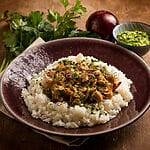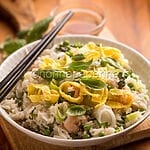Grandma Ducky » Recipes for intolerant people » Recipes from all over the world for you
Recipes from all over the world for you

A collection of the tastiest recipes from around the globe
In order to share and honour our native food, the category “Recipes from the World” tries to improve the excellent things that come from elsewhere. This is not a concept for those with open minds; rather, it is an effort to promote intellectual honesty by showing that Italian cuisine is not the only one deserving of the designation. So, below, I offer recipes that come from a variety of nations, faithful to their original forms but, if required, modified to make them healthier. I suggest that you think of this portion as a perfect journey that takes you beyond Italy’s borders and to places like Japan, China, the Americas, northern Europe, etc., a risk-free way to experience innovative flavours and daring combinations. Additionally, the category includes recipes for special occasions. The anniversary reference is nearly obligatory. The first reason is that anniversaries provide an excuse to eat a lot and cheerfully rejoice at the table. The second reason is because some of the present anniversaries have a foreign origin (such as Halloween). Additionally, understanding the culinary customs implies looking deeper into the history of the celebrations.
Ethnic cuisine: a world to discover
You cannot fully appreciate international food and be leery of anything that is not from your own country. But I suggest you look beyond a limited, purely conventional knowledge of food. It is only conceivable to understand how much goodness exists beyond the Alps, over the seas, beyond the Urals, and so forth by challenging certain basic preconceptions. Cooking is a cultural activity, and every culture has its own identity and culinary traditions. This is a universal truth. Therefore, I urge you to extend your mind and heart so that you can taste and feel new things. You’ll treat yourself to a vacation you’ve never taken, one that doesn’t involve moving yet keeps the days busy nonetheless. a journey of new tastes and colours that will gradually become familiar.
The best international cuisines
A proverb claims that the earth is wonderful because it is diverse, and dishes from many cultures support this statement. Consider recipes from around the world as a category rich in ideas and hundreds of discoveries in the kitchen, since the proverb holds especially true in the kitchen: If one looks with an eye free from prejudice at the culinary traditions of others, in terms of Italian food, it is important to acknowledge that each cuisine has its own unique characteristics, points of contact, and distinctions. You can find common recipes that place a strong emphasis on the flavours of sweet and sour or dishes that emphasise the use of spices. Given that the concept of courses is almost exclusively an Italian creation, you will probably find recipes that lean more towards a single dish. Even recipes using ingredients you’ve never heard of are available. However, you may read in-depth descriptions of some of the more distinctive foreign cuisines that have the potential to make a certain fortune even outside of national borders down below.
The best of French cuisine
French cuisine incorporates a variety of dishes from throughout the globe. In actuality, it is not only among the most well-known but also the one that is most similar to Italian food. The pastry shop, which has a lot in common with our neighbourhood shop, is where the proximity is most obvious. In fact, the provenance of some preparations is in dispute because both nations claim them. Unmistakably French, madeleine is a sweet with a delicate consistency, a classy appearance, and a distinct flavour. It is created with flour, butter, sugar, yeast, and lemon. The astounding success it has experienced around the world is proof that there aren’t many elements needed for an outstanding yield. Nevertheless, it lends itself to a variety of modifications, including ones made with gluten-free flours for celiacs. French food is unique and admired for its diversity. It comes from the fact that certain regional cuisines exist and represent particular values. This is the case with Provençal cuisine, which uses a lot of fruit and uses unusual techniques. As an illustration, consider the “upside-down” cake known as clafoutis, in which the dough is poured over a layer of finely chopped fruit. Provence cherries are used to make the traditional clafoutis.
The characteristics of Greek cuisine
Greek cuisine has a lot of room in global cuisine as well. Given the close cultural ties between Greece and Italy, Greek food is often compared to Italian food. It actually turns out to be quite different, in part because it clearly has Turkish influences. Greek food stands out for its abundance of fruit and vegetables, which resemble the Mediterranean diet’s food pyramid almost exactly. However, it is enriched by the use of spiced sauces, often based on plain yogurt. An example of these characteristics is souvlaki with tirokafteri sauce, which is pork or chicken skewers flavoured with thyme, rosemary, and lemon juice. The kebabs are accompanied with pita, the famous Greek bread, a side dish of kalamata olives, and tomatoes. Also added to them is tirokafteri, a feta cheese and yoghurt-based sauce that has a delightful sourness. As a sort of parmigiana in a Hellenic sauce, moussaka could be compared to a parmigiana with a much more Mediterranean flavour. Layers of fried aubergines are layered with potatoes, butter, and minced beef for a complete dinner. Even though it is not a diet food, it is excellent and must be tried. Nutmeg and thyme are used for the occasion, as is customary in Greek (and Turkish) cuisine.

Vanillekipferl, traditional German tea biscuits
How did vanillekipferl biscuits come to be? Part of the history of vanillekipferl is unclear. On...
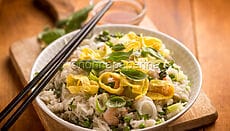
Fried rice with shrimp and basil, a delicious recipe
Which rice should be used? Fried rice with shrimp and basil, like many comparable recipes, depends...
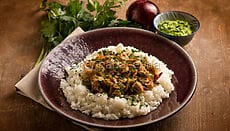
Chicken Yassa, a spicy and tasty Senegalese dish
Discovering Yassa chicken Yassa is a Senegalese dish made with chicken and rice, a complete dish...

Taramosalata, a colourful and aromatic Greek sauce
All the deliciousness of Mullet roe What makes taramosalata unique is that its primary ingredient...

Wagyu tartare, ginger oil, and oyster sauce
Seeing is believing; this Wagyu tartare is truly exceptional I often find myself looking for fresh...
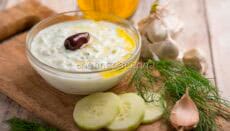
Tzatziki, the delicious classic Greek sauce
A few intriguing facts about the tzatziki sauce This yoghurt sauce is usually served with bread or...
Did you know that
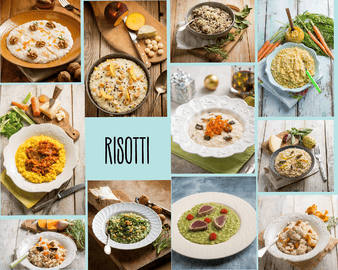
Risottos: Delicious ideas for easy and tasty recipes
Risottos: an endless array of recipes to explore One of the most recognisable Italian foods is risotto. They represent modern gastronomy's focus on ingredient quality and its capacity to turn basic components into delectable dishes that evoke a genuine culinary experience and engage both taste and sight. In the end, risottos are not only delicious but also aesthetically pleasing. The gourmet aspect of many of the most basic rice-based recipes sets them apart, to the point where they shine on the menus of the most exclusive dining establishments. Risotto with bacon and courgettes is a...
Recipes and most read articles

Wagyu tartare, ginger oil, and oyster sauce
Seeing is believing; this Wagyu tartare is truly exceptional I often find myself looking for fresh...
Vanillekipferl, traditional German tea biscuits
How did vanillekipferl biscuits come to be? Part of the...
Chicken Yassa, a spicy and tasty Senegalese dish
Discovering Yassa chicken Yassa is a Senegalese dish made...
Fried rice with shrimp and basil, a delicious recipe
Which rice should be used? Fried rice with shrimp and...
Tzatziki, the delicious classic Greek sauce
A few intriguing facts about the tzatziki sauce This...
Never self-diagnose
Symptoms and triggers
What was previously discussed also explains the variety of symptoms that allergies and intolerances create. Allergic symptoms are often systemic and violent and can include severe malaise, rashes, and respiratory problems. If the interaction with the substance occurs on the skin, eczema may be noted in the contact area. This is the case with the nickel allergy. There is no shortage, especially when taken, of gastrointestinal problems, such as pain, cramps, diarrhoea, and nausea. More specific and primarily gastrointestinal symptoms are associated with intolerances. This usually happens as a result of the body trying to digest the material but failing, which causes it to create gas. The symptoms we have discussed are brought on by this abnormally high gas content. This is exactly the case with lactose intolerance; in reality, lactose typically stays intact instead of converting to glucose and galactose, which would otherwise cause gas to build up. A difference between allergies and intolerances, which is often mistaken for a common point, is the class of substances that trigger one or the other. In the case of allergies, the offending substance is a food as a whole. In the case of intolerances, it is often a molecule, a sugar, or a protein. The most common food allergies involve milk, millet, wheat, eggs, and shellfish. The most common food intolerances, however, concern lactose, gluten, and so on. This has varied consequences for living standards. In essence, those with allergies are much more compromised. Having to avoid a substance is one thing; having to avoid a food is another matter entirely. Just to give an example, those who are lactose intolerant can still drink milk and consume dairy products, as long as they are lactose-free. Those who are allergic to milk do not have this option.How to diagnose allergies and intolerances?
Food allergies are mostly diagnosed clinically, which means that they come from the observation of discernible and experimentally quantifiable reactions. This has given rise to the myth that even one person can diagnose himself without the assistance of a specialist.In reality, it is a huge mistake. Self-diagnosis is fallacious because, to correctly identify the disease, a wealth of knowledge is needed, which is useful for the interpretation of the phenomenon. Furthermore, it is also dangerous, as it risks triggering the symptoms of the disease. It is true that the diagnosis passes through trials and errors, but these must follow one another from a risk reduction perspective typical of the medical profession. Therefore, yes to eliminating this or that element from the diet to understand if it is precisely this that triggers the allergic symptoms. Yes, as well as adding further doses of the suspected allergen to check the body's reaction, but according to very precise stages and indications provided by the specialist. Intolerance is also diagnosed or more frequently "discovered" with the addition or subtraction of specific elements from the diet. However, the first aim is to exclude allergy, which is quite simple given the diversity of symptoms. In some cases, there are available tests that guarantee diagnosis. This is the case of the breath test for lactose intolerance, in which the patient is invited to consume milk gradually. Subsequently, they blow into a machine that analyses the composition of the air introduced. If there is an excessive quantity of carbon dioxide, then there is an intolerance; in fact, the abundance of CO2 is caused precisely by poor digestion and malabsorption. If there is a suspected case of celiac disease, however, blood tests can be carried out to trace specific antibodies, as this pathology still "stimulates" the immune system.Specific Instrumental exams
It is worthwhile investigating instrumental exams in more detail. Many people actually get a sense of awe when they consider the diagnostic process, imagining the intricate or agonising procedure. All in all, it's really easy and not too complicated. This is particularly true for the breathalyser test. As I have previously said, there is still work to be done on the "preparation" issue, which is one that merits special attention. In truth, there are strict guidelines that must be followed; you cannot simply turn up for the breathalyser test as if nothing had happened. The most crucial one relates to fasting, which must continue for the eight hours before the exam. Arriving with an "empty" stomach and intestines will allow for an unbiased analysis of the effects of lactose on the digestive system, similarly with smoking. In actuality, smoking can progressively change respiratory function, which could cause mistakes by the tester. Eating light during the final supper (at least eight hours prior to the exam) is also a smart option. In this sense, we advise consuming foods that cause less intestinal gas, such as rice, meat, or fish. From a medical perspective, the tests used to diagnose celiac disease are more complicated. For the patient, they are a "piece of cake," since they only require a basic blood test. Next, an analysis is conducted to confirm if certain antibodies against gluten are present. Antibodies can be identified as anti-gliadin (AGA), anti-endomysium, or anti-transglutaminase (tTG). Although it is evident that the results are tough to read, professionals and specialists are available to help. It is feasible to do some genetic testing if the results are unclear or if celiac disease is detected at an early stage. These are meant to confirm whether genetic components linked to celiac disease are present. Genetic tests are somewhat uncommon, partly due to their high cost.Behaviours and therapies
The only genuine treatment for a food allergy is removing the food entirely from your diet. This isn't always feasible, though, as it can seriously lower the quality of life in certain situations. An unusual event that only applies to circumstances where multiple allergens are present at once. In these cases, we proceed with immunotherapies, which involve the gradual and increasing exposure to the allergen in an attempt to restore a correct immune response. In the worst-case scenario, i.e., when the sensitivity is extreme, chelating drugs can be taken, which effectively detoxify the body from the offending substance. The same goes for celiac disease, except that in this case we stop at eliminating gluten. It is in fact a less burdensome effort than you might think, since there are many foods that can best replace full-gluten foods. It is a different story, however, for lactose intolerance. In this case, it is possible to avoid milk, dairy products, and fresh cheeses or focus on lactose-free variants. Removing lactose is a trivial operation that only alters the taste a little. The process consists of introducing the lactase enzyme into the milk. This enzyme, which is missing in intolerant people, actually "breaks down" lactose, which then transforms into glucose and galactose, substances that are digestible by all.The lifestyle of those suffering from food intolerances
Does the quality of life significantly decline for people with food allergies or intolerances? Yes, as common sense would have it. If giving up the foods causing the symptoms is the sole treatment option, with the exception of specific circumstances (such as immunotherapy), it may be easily concluded that these conditions rob people of one of life's greatest pleasures: eating anything they want. It is logical, but it only holds true if those who have been diagnosed "let themselves go" and do not behave shrewdly when confronted with a real situation. The truth is simple: you can live with intolerances and allergies without compromising your relationship with food. In short, we can avoid exchanging physical suffering (symptoms of intolerances and allergies) with psychological suffering. The secret lies in changing your approach to nutrition and undertaking a journey of knowledge about foods. There are many meals found in nature that can take the place of ones that are off-limits because of an allergy or intolerance. In the vast majority of cases, they are good, nutritious, and lead to good cuisine. There are certain "ingredients" required in order to start and finish this voyage. Prior to anything else, the diagnosis must be psychologically processed. Everyone eventually comes to terms with it, although it's not an instant process. Secondly, a shift in mindset that goes beyond the "classic Mediterranean" perspective and is more receptive to novel flavours is required. Coincidentally, a large portion of the "usable" items and the recipes that call for them originate from other sources. Finally, cultivating a genuine culture of sharing is beneficial. Engaging others in one's personal development, or even just sharing "anti-intolerance" meals, helps to reestablish a sense of normalcy and modifies the way that "healthy" individuals view allergies and intolerant people.Some details on lactose intolerance and celiac disease
What does it mean, precisely, to have one of these disorders? In response, I narrowed the focus of the inquiry to the two most common: celiac disease and lactose intolerance. However, I have personal experience with it as I deal with both. I can now claim that, having gone on a voyage of evolution and understanding regarding my relationship with food, I am satisfied. I don't see these disorders as a problem since I carefully consider the compromises I must make in order to live with them, both psychologically and as a lifestyle. To address lactose sensitivity, for instance, I use plant-based milk substitutes like soy, almond, and coconut milk in place of milk and its derivatives. I can safely consume lactose-free items as they are just as wonderful as "normal" ones, but they are a little more expensive. I have always loved experimenting, but having celiac disease caused a drastic shift in my cooking style, resulting in the discovery of many new foods and a newfound level of creativity. Like everyone else, they substitute rice and corn flour for wheat flour, but I also use and create delectable recipes using a variety of unusual flours. Any examples? flour made from amaranth, quinoa, fonio, etc. It is a pleasure rather than an effort. They also, for the most part, give the food a fantastical touch without taking into account their nutritional qualities, which are frequently more prominent than those of regular flours. They are also frequently high in vitamins, mineral salts, and a lot of proteins. There aren't many variations in terms of calorie consumption because, well, flour is flour!
Explore the Versatility of Cucinarea: Your Culinary Stage
Cucinarea is much more than just a space. It is a unique environment where passion for food and design come together, creating a unique atmosphere for every type of event. With elegant spaces and state-of-the-art equipment, Cucinarea is the ideal place to make every occasion memorable. Whether it's cooking classes, business meetings, or large-scale events, discover how we can enhance every initiative you have.
Cooking Classes: Learn from the Best
At Cucinarea, we host cooking classes each month that focus on elegant and sophisticated menus. You will have the opportunity to learn directly from renowned and specialized chefs, who will guide you in preparing dishes that will amaze your guests. Our courses strike a perfect balance between entertainment and learning, taking place in a welcoming and refined environment, ideal for anyone looking to improve their culinary skills. The courses are divided into two phases: a practical demonstration by the chef and a tasting phase, where you can taste and share the freshly prepared dishes, turning learning into a real pleasure.
Meeting and Conference Room: Combining Elegance and Functionality
Our meeting room is designed to host a wide range of corporate events and conferences. Spacious and well-furnished, this room provides an ideal environment for business meetings, presentations, and special initiatives. It is the perfect setting to promote networking, professional updates, and team spirit strengthening. Our rooms can be configured for executive meetings, business negotiations, or both formal and informal events. With high-level culinary offerings, every meeting becomes a memorable occasion.
Home Chef Service: Transform Your Home into a High-Class Restaurant
Our home chef service brings high-quality cuisine from the best restaurants directly to your home. This service mode is gaining popularity, allowing you to enjoy the thrill of having a personal chef without leaving the comfort of your home. Home chefs are expert professionals who adapt their menus to create memorable events, whether they are formal dinners or more casual gatherings. The preparation of the dishes takes place right before your eyes, making every occasion a special and personalized moment. Each event managed by our chef becomes a unique occasion, carefully designed to meet the specific needs of each client.
Team Building: Growth and Fun
Team building is a series of activities designed to strengthen team spirit and improve cohesion among team members. Through cooperative and fun challenges, participants work together to achieve common goals, improving communication and interaction. Our team building activities are designed to be not only effective but also engaging, creating a positive and stimulating environment. These experiences are crucial for forming cohesive and motivated teams, which translate into better performance at work.
Event Rooms: Perfect Locations for Unforgettable Moments
Our event rooms offer the ideal space for any type of party or celebration. Every detail is designed to create an environment that is not just a place, but a starting point for building precious memories. Whether it's an intimate gathering or a large celebration, our rooms are adaptable to realize the event our clients have always dreamed of. From the arrangement of spaces to lighting, every element is adjustable to meet the most specific needs.
Locations for Photo Shoots
Cucinarea also offers ideal spaces for photo shoots and video productions. Our spaces are designed with great attention to style and decor, creating unique settings that enrich every type of photographic service or video production. From the sober and elegant style of the conference room, ideal for institutional videos, to the lively environment of the kitchen, perfect for culinary videos, every corner of Cucinarea is designed to be photogenic and functional.
Don’t worry be happy
Don’t worry and be happy. This is my motto.
I still remember when, many years ago, I was diagnosed with not one but three intolerances: lactose, nickel and gluten. One after the other, without even having time to digest the news. I felt lost, I was sick at the thought of having to give up my favorite dishes. If it is true that food is also a source of happiness, I felt I had lost it forever.
I soon discovered that cooking is the key to getting out of it and not losing anything in life. I have always been passionate about cooking and good food. I have always shown interest in traditional Italian and foreign recipes. I also never held back when it came to experimenting. It was precisely the open-mindedness to the new that saved me. I soon realized that there was a lot of food out there still within my reach, and infinite recipes with which to enhance them.
Nonnapaperina.it was created precisely for this purpose, that is to share with you not only recipes for intolerants, but also a different approach to managing the disease. An approach that does not aim to limit the damage, but to find happiness in a cuisine that is only apparently different. In all of this, I was driven by the sense of sharing, which I have never lacked, but also by the awareness of being able to do good, contributing to the serenity of others.
Nonnapaperina.it in its small way is the demonstration of how food intolerances can be defeated precisely on the terrain in which they seem to have an easy life: nutrition. In reality, life’s difficulties are an opportunity to get involved. A funny paradox, but one that is confirmed in real life: difficulties push you to get involved, and getting involved means overcoming difficulties.
I address all those who have recently received a diagnosis of food intolerance, food allergy or celiac disease. Feel entitled to feel sorry for as long as necessary, take as much time as you need to process the news. Afterwards, however, get back up and react. Also because you can do it. The solution is within reach and also fun, that is, rethinking cooking, nutrition and your relationship with food.
I also advise you to abandon as soon as possible the negative thoughts that are certainly crowding your mind. I know because I’ve been there too. An example? The belief that the condition of food intolerant marks a gap with respect to others and other people is very consistent. On the other hand, you can’t eat some of the things others eat every day!
It is a negative and false thought. First of all, the concept of food intolerance has firmly entered the collective imagination, so no one is surprised by a person who suffers from this disorder. Today more than ever the stigma of the disease is superfluous and out of place. Secondly, the foods available to intolerant people and the recipes based on them are good for everyone, even for those who do not suffer from such problems. In short, “ghettoisation” has no point in existing, much less one in which the presumed sick person relegates himself.
Indeed, many joyfully welcome the chance to experiment with new dishes in the kitchen. A dessert made with an alternative flour can arouse more interest than a classic dessert. And it doesn’t matter if the strings of belonging are touched. It is certainly not a food that makes a dish the symbol of tradition!
The same goes for the fear of causing annoyance to others on social occasions, when we all go out to eat together. Food intolerances are not a taboo at all, therefore all or almost all catering businesses offer alternatives to those suffering from lactose or nickel intolerance, or to those suffering from celiac disease and allergies. For this reason I advise you to do as I did, even if the diagnosis shocked you and caught you off guard. Don’t worry, be happy. There is a solution and it is very concrete.
I opened this excursus on food intolerances and food allergies with a reference to my diagnoses. In reality my story from this point of view is a little longer and more complex. It is worth telling, as it can offer some ideas for overcoming certain passages that are perhaps a little more difficult. The most important turning point occurred a few months after the first diagnoses, when I had already come to terms with my new condition.
Well, I was no longer intolerant to nickel, but I was actually allergic. The news didn’t shock me too much as it was still about avoiding or managing nickel. However, I have discovered on my skin that the allergy leads to an even more pronounced sensitivity. Removing nickel to zero is impossible, so I initially underwent a hyposensitizing therapy, which aims to introduce initially minimal quantities of nickel into my body, and then gradually higher quantities, in order to get the body used to it.
The therapy failed, as my extreme sensitivity to the substance left no room for maneuver. I tried chelation therapy almost immediately, which instead consists of natural detoxification from some metals, primarily nickel. This remedy worked, as in a short time I stopped experiencing the symptoms and was able to stop taking the corticosteroids (which kept the symptoms at bay).
What does my story demonstrate? Simply, even when obstacles seem insurmountable, there is always a solution. In the field of nutrition, my case is quite particular, yet here I am, satisfied with my diet and my relationship with food.
What Nonnapaperina.it can do for you
I have already introduced the reason why I undertook the Nonnapaperina.it project, i.e. sharing my experience and the possibility for everyone to benefit from solutions at hand for a safe diet. food intolerance. We might as well, therefore, talk a little about the site and give some advice on how to “live” it to the fullest. For example, for everyday life, refer to the “recipes for intolerants” section. You will find plenty of them, all categorized by course (first courses, second courses, etc.), time of day (breakfast, lunch, dinner), function (bases, doughs, creams, sauces) and much more.
However, don’t neglect the section on holidays. If the key principle of the project is sharing, then the ball quickly passes to you, so freely share the recipes with your loved ones and friends. And what better occasion than a holiday, be it Christmas, Easter or Mother’s Day? Recipes often have something artistic about them. The dishes present an “elevated” concept of cuisine, which involves not only the sense of taste, but lays the foundations for an all-round experience. All for the use and consumption of food intolerants, or lovers of good food in general.
The advice, however, is to space out. The site is based on the hypertext principle, that is, each recipe recalls others, and many more. Let yourself be carried away and you will really feel like you are embarking on a journey into anti-food intolerance cuisine, in its most “friendly” and fun version! Happy tasting everyone!
Food intolerances and allergies can be defeated at the table
Food intolerances and allergies risk becoming a social problem if it is not managed carefully. First of all due to the dimensions of the phenomenon. It is estimated, in fact, that around 10% of the population suffers from some disorder linked to the absorption of food substances and, at the same time, capable of generating more or less important symptoms. In the dock are lactose intolerance and celiac disease, which are by far the most widespread pathologies, but allergy and sensitivity to nickel must also be taken into consideration.
Incidentally, the distinction between intolerance and allergy is fundamental for medical purposes. The symptoms are in fact different in type or intensity (or both). What makes the weather good is bad weatherin particular allergies, which involves the immune system and therefore determines symptoms often systemic. Food intolerances, on the other hand, mainly produce gastrointestinal symptoms. A separate discussion for celiac disease, which technically is not an allergy, but still involves the immune system.
The distinction between intolerance and allergy, however, takes a secondary positionas far as therapeutic approaches are concerned, or rather “management”. Net of some exceptions, which concern cases of “poor tolerability”, intolerances and allergiesshould be treated in the same way, that is, avoiding the substances that create the problems. In almost all cases, in fact, there is no definitive therapy and therefore recovery is a hypothesis to be excluded.
Whoever receives a diagnosis of intolerance or allergy is aware of this. The emotional impact of the diagnosis is very strong precisely because of the impossibility of achieving complete recovery. Let’s be clear, the initial disorientation is physiological and justified. However, it must last a short time, that is, the time necessary to take note of the good news regarding intolerant and allergic people: living with these disorders is possible! It is therefore possible to live with eating disorders without giving up your favorite dishes and without saying goodbye to your eating style.
Not substitutes but conscious food choices
Food intolerances and allergies are fought not only with the weapons of medicine, but also through a change of mentality, which in turn involves the way of understanding cooking. The trick is simple, just don’t look at hypoallergenic and anti-intolerance foods as substitutes for “normal foods”. Foods for intolerants are in fact foods with their own specificity and capable of offering a lot on an organoleptic and visual level.
Those suffering from food intolerances and allergies should not replicate the consumption of milk, bread or other foods, but should enhance the foods they can safely draw on. Adopting this approach means first of all freeing yourself from the role of the “sick person”, actually focusing on other foods.
Helping us in this sense is nature with its many varieties. The foods that are suitable for celiacs, or those intolerant to lactose, are numerous and often good and beautiful to look at; furthermore they are very versatile as they can start many truly delicious recipes. They are not only for those who suffer from these pathologies, but also for everyone else. The implications from a social point of view are evident.
With my cooking website I carry forward exactly this philosophy. It is not just a space to learn about recipes, but also a real manifesto for those who want to tackle food intolerances with less tedious weapons than exclusively healthcare ones. From this perspective, rice flour is not a substitute for traditional flour, but a separate element with which to create delicious recipes, which can be combined with a great variety of ingredients. And the same, obviously, can be said of amaranth, fonio, quinoa etc. flours. A similar discussion can also be made for lactose intolerance. Apart from the possibility of delactosing the milk, the vegetable variants enjoy their own gastronomic dignity and open up an interesting creative approach in the kitchen.
Among other things, this forced change creates the conditions for a journey through alternative cuisines and more exotic foods. Here the perspective is reversed: intolerances and allergies are not only a manageable condition, but also an opportunity for enrichment.
Food intolerances and sociality, a false problem
Another reason why the diagnosis of intolerance or allergy is very scary, throwing those who suffer from it into despair, concerns the implications for social life. Those who have recently received a diagnosis are convinced in most cases that their pathology will negatively impact social opportunities, both from a psychological – emotional and practical point of view. The fear is that of feeling different and somehow distant from the norms of normality, this can also lead to discomfort among relatives and friends.
These are actually unfounded fears. First of all, a pathological condition does not correspond to a condition of “abnormality” (net of the semantic inconsistency of the term). Secondly, a minimum of organization and awareness is enough to also manage social opportunities. Indeed, when these take place outside the home, i.e. in premises used for catering, the issue is even simpler. In fact, managers are in most cases prepared to welcome customers with intolerances and allergies. In any case just inform yourself first and choose accordingly.
But the problem doesn’t even arise if you eat at other people’s homes, or if you invite people to your home. Firstly because diagnoses of this type do not cause a sensation as they are now very widespread. Secondly because the dishes for those suffering from food intolerances are actually good for everyone, even for those who do not suffer from any ailment. Despite all this, if you pay attention to the issue of food contamination, cooking for food intolerants (or allergies) is simpler than you might imagine.



